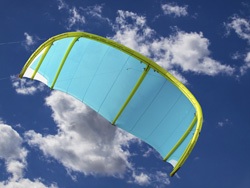More sky, more power
In the troposphere, wind velocity increases with altitude and is also more constant. In the EU-funded project KITVES(opens in new window), scientists produced a power generator on board a ship that harvests high-altitude wind and efficiently converts wind power into electricity. The powerful wind is channelled through arrays of large tethered power kites cruising at an altitude of approximately 1 000 m. Kite wings have embedded sensors that track position, acceleration and orientation data, which are then sent to a control unit on the boat. Also located on board the boat, motors control the kite flight paths and act as the power generators. The system supplies electricity for both on-board services and auxiliary equipment as well as thrust force for additional traction in emergencies. In particular, scientists produced a revolving structure (stem) on a vertical axis where kites are tethered. Furthermore, they developed an exit-roller system that is mounted at the mouth of the stem to guide the lines smoothly. Based on ultracapacitors, an energy storage system allows the system to reach a stand-by position during operations even in the event of blackouts. The generator was assembled on site in Italy where a no-fly zone was established for preliminary onshore testing. Scientists also designed, manufactured and tested the components of the air-based system consisting of kites, sensors and electronics, including a micro turbine with a dedicated battery management system. Computerised mathematical models were developed to simulate and optimise the whole system. Investigators used these to conduct failure mode, effects and criticality analysis. In addition, they developed two different high-level control systems for piloting the kite. The KITVES system promises significant savings in fuel consumption, leading to decreased costs and emissions. The generator could also be quite useful during emergency manoeuvring for increased safety.







